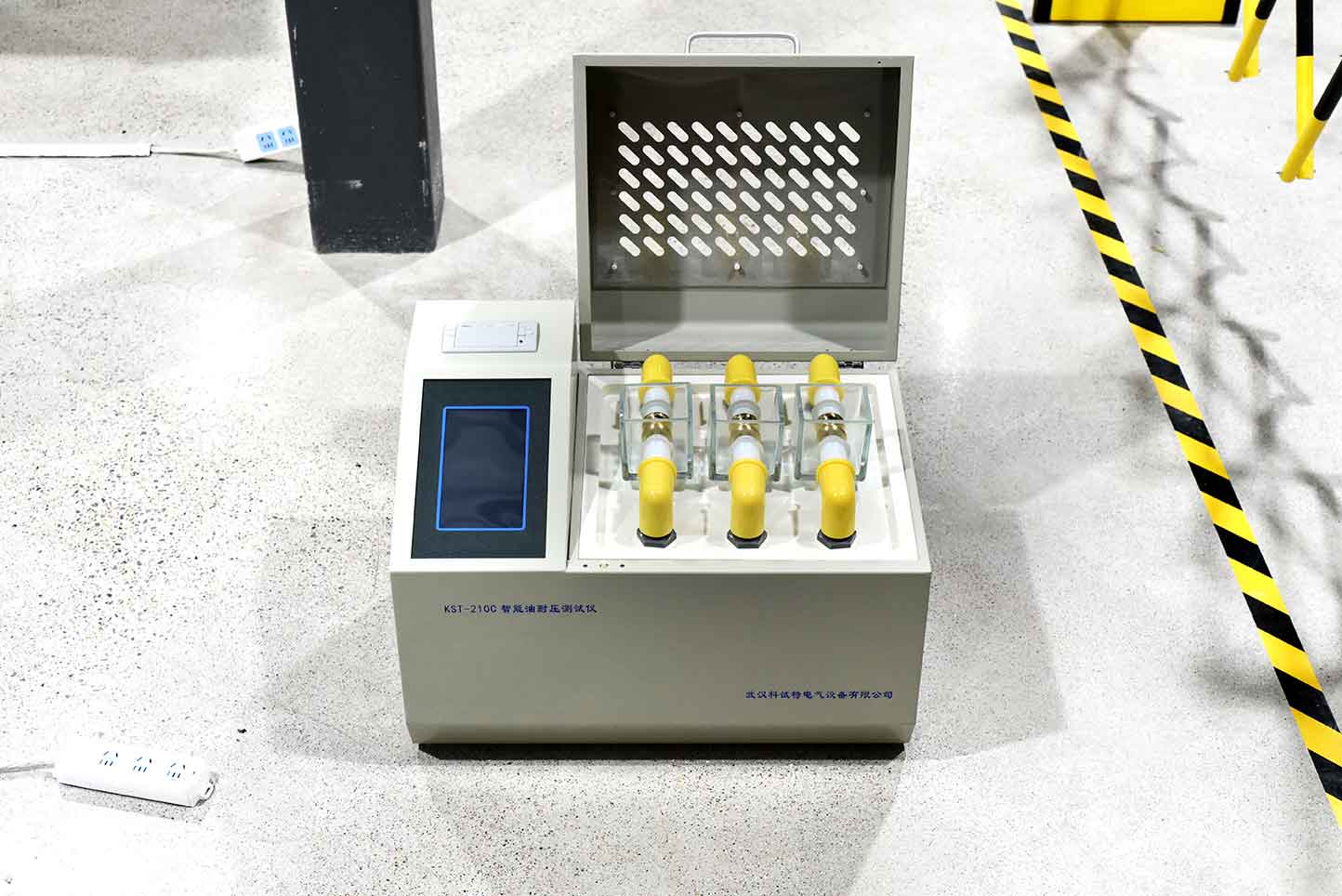Many power systems, railway systems, large-scale petrochemical plants and enterprises have a lot of electrical equipment whose internal insulation are mostly oil-filled insulation type, and therefore, test on insulating oil dielectric strength is common and necessary.
To meet the needs of the market, we have developed and produced a series of insulating oil dielectric strength testers according to national standard GB/T507-2002, industry standard DL429.9-91 and the latest Electric Power Industry Standard DL/T846.7-2004 by ourselves. This transformer tester is based on single-chip microcomputer, fully automated operation, high precision, greatly improving work efficiency and reducing labor intensity of workers.
Cleaning method for oil cup of oil pressure tester
1. Cleaning method for oil cup
⑴ Use a clean silk cloth to repeatedly wipe the surface of the electrode and the electrode rod.
⑵ Adjust the electrode spacing with a standard gauge.
⑶ Clean three times with petroleum ether (avoid using other organic solvents), and each time follow the following method:
① Pour petroleum ether into an oil cup, accounting for 1/4 to 1/3 of the cup's capacity.
② Cover the mouth of the oil cup with a glass plate washed with petroleum ether, shake it evenly for one minute, and be sure to apply a certain amount of force.
③ Pour out the petroleum ether and blow with a hair dryer for 2-3 minutes.
Clean 1-3 times with the oil sample to be tested.
① Pour the oil sample to be tested into an oil cup, about 1/4 to 1/3.
② Cover the oil cup with a dried glass piece and shake it evenly for 1-2 minutes, making sure to apply a certain amount of force.
③ After pouring out the remaining oil sample, a pressure test can be conducted.
2. Cleaning method for agitator blades
⑴ Use a clean silk cloth to repeatedly wipe the mixing blade until there are no small particles on the surface. Avoid touching the surface of the mixing blade with your hands.
⑵ Use tweezers to clamp the stirring paddle and immerse it in petroleum ether for repeated rinsing.
⑶ Use tweezers to clamp the mixing paddle and blow dry with a hair dryer.
(4) Use tweezers to clamp the stirring blade and immerse it in the oil sample to be tested, and rinse it repeatedly.
3. Oil cup storage
Method 1: After the experiment is completed, fill the oil cup with high-quality insulating oil and place the cup steadily.
Method 2: Clean and dry with petroleum ether according to the above cleaning method, and store in a vacuum dryer.
Note: Before the first test and after testing inferior oil, the oil cup and mixing slurry must be cleaned according to the above method.

4. Common troubleshooting methods
(1) The power indicator light is not on, and the screen is not displaying
① Check if the power plug is securely inserted
② Check if the fuse inside the power socket is intact
③ Check if the socket has power
⑵ There is no breakdown phenomenon in the oil cup
① Check if the circuit board connectors are properly inserted
② Check if the high-voltage switch on the box cover is in good contact
③ Check if the high-voltage contact is not engaged
④ Check for high-voltage disconnection
⑶ Insufficient display contrast
① Adjusting the potentiometer on the circuit board
The printer does not print
① Check if the printer power cord is properly plugged in
② Check if the printer data cable is properly plugged in
Kvtester Electronics Technology Co.,Ltd. is a high-tech enterprise specializing in power testing, testing, research and development, production, and sales of testing equipment. It has been engaged in the electrical testing industry for many years, and its products are of high quality. We welcome customers to come and purchase. Service hotline: 0086-27-81778799, to learn more, visit the official website: www.kvtester.com





